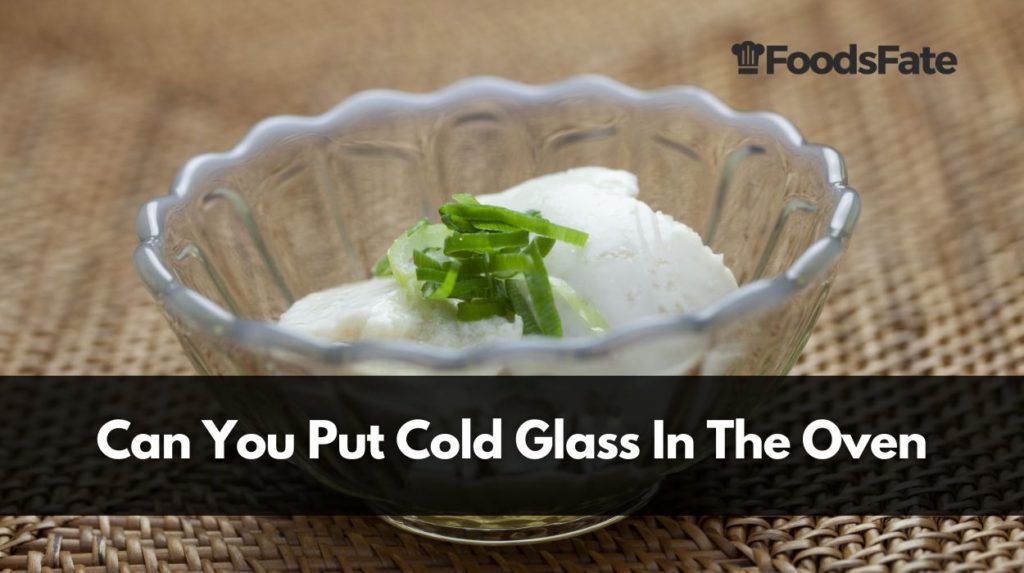
Imagine you have a frozen bowl of meat and you are wondering if glass can safely go in the oven? If done correctly, glassware can go in the oven without causing any damage.
Basic chemistry demonstrates that glass expands when heated; hence, if a cold piece of glass is abruptly placed inside a heating oven, there is a probability that the glass will break due to the rapid expansion.
This article will guide you on how to securely use glass containers in ovens. We will also discuss the next course of action if a glass mishap happens.
Can You Put Cold Glass in the Oven: Simple Guide
If the appropriate glass is utilized and the proper temperature limit is kept, glass can be used in the oven without risk. That said, not all glasses are safe to use in the oven.
The oven is often pre-heated at high temperatures for baking and heating food items. Thus, introducing cold glassware in a heated environment can break the glass due to sudden temperature changes.
Additionally, it is imperative to confirm that the glassware can withstand high temperatures and is oven safe. A fragile glass may fracture when subjected to high oven temperatures.
Which Glass is Oven Safe?
Most people think that because all glassware is made under intense heat and high temperatures, it should be stable in a hot oven. But that is not true!
To safely use glassware in an oven, one must understand the type of glassware. Don’t know how to do that? We got your back!
Classification of Glassware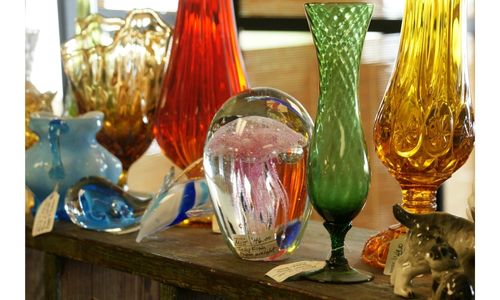
Glassware can be broadly classified into Ordinary Glassware and Tempered Glassware. The former cannot be used in an oven, whereas tempered glass is safe at high temperatures.
Both glasses are processed differently. Standard glass is annealed at high temperatures to give it a specific shape and texture; however, they are very fragile. Under high pressure, they can break into irregular but big pieces with sharp edges.
Tempered glass is heated to high temperatures in an oven, then cooled to extremely low temperatures while being compressed under intense pressure. These glasses are stable at high temperatures and can retain their shape under extreme pressure. Furthermore, if they do break, they will crack into small but harmless pieces.
What Happens To Glass When Heated
Glassware’s processed under the influence of heat. At high temperatures, glass can melt and be shaped and molded into unique designs and styles.
Hence, when a glass is heated, the structure of the glassware changes as it becomes hot. If heated further, the glass will melt and crack. Most of the glassware melts between 1400 degrees Fahrenheit and 1600 degrees Fahrenheit.
Why Glass Breaks Under Heat
Glass is not a good conductor of heat; thus, heat is not conducted evenly in glassware. As a result, when a hot liquid is poured into a glass, only the area where the liquid is present becomes hot; the remainder of the glass remains cool.
When glass is heated, the molecules expand and gradually pick up speed. Likewise, when it is cooled, the molecules lose energy and start contracting.
Due to its weak conductivity, the glass will heat unevenly. As a result, the hot portion will expand while the cold portion will continue to contract. If the temperature difference keeps increasing, the glass may crack due to the polar energy molecules.
Heat-Resistant Glass
As the name indicates, these glasses can tolerate high temperatures. Tempered glasses are resistant to heat and are almost four times stronger than standard glassware.
Other examples of heat-resistant glass are the glasswares manufactured by Pyrex, Corelle, Borosilicate, etc. Pyrex containers are microwave friendly and can withstand temperatures up to 1000 degrees Fahrenheit.
Things to Do Before Putting Cold Glass in Oven
If you are unsure if your glass is tempered or ordinary, it is best to take some precautions before exposing it to hot oven temperatures.
The following methods can help you warm your meal safely without causing any mishaps or health hazards.
Check If Your Glass Is Oven-Safe
Reputable manufacturers and brands let the customer know if a product is suitable for an oven or not. If you are still unsure, look for an oven-safe mark. Since there is no universal symbol, you can look in the box or the manual for the answer. Typically, the sign will resemble a fuming oven.
Don’t Use Too High Temperatures
Better safe than sorry! It’s preferable to begin with low temperatures and raise them gradually as you cook or bake your dish. Sudden temperature shock may break the glassware due to uneven expansion and contraction.
Let It Warm up A Bit
It is a good practice to follow every time you try to warm up a frozen item. It would help if you gave it time to thaw at room temperature. In addition to aiding in the prevention of thermal shock, it will also prevent the melting of frozen food inside the oven.
Don’t Preheat
I’m sure we all enjoy pre-heating the oven to achieve the greatest baking results and to cut down on cooking time, but you may omit it if you want to keep your glassware safe.
You can turn on the oven after placing the glassware inside instead of removing it from the freezer and placing it into a hot, heated oven. It will guarantee that the glass warms up gradually as the temperature rises.
Check for Cracks and Scratches
Cracks and gaps can frequently form as a result of freezing. Before placing the glass in the oven, you should ensure it has not been tampered with.
Look closely to see if the surface has any cracks or imperfections. It is recommended to reheat the food in another glassware if the glass is not in good condition. High temperatures will only make a broken or fractured piece of glass worse. Hence, before and after heating, inspect the container for any damages.
Another method to check for glassware’s integrity is to fill it with water and check for leakages. If you notice any droplets on the outside surface, the glass is fractured and thus should not be used for heating or freezing.
What Are the Benefits of Heating Food in Glass Containers
Wondering what makes these glass containers so appealing? They look classy and can be used for freezing, heating, stocking, serving, etc.
Listed below are some more benefits of heating food in
glass containers.
Non-Toxic
Unlike plastic containers that release toxic chemicals when heated at high temperatures, glass containers are safe. Some plastic ware release BPAs that are carcinogenic and can damage organs.
Since glassware is stable at high temperatures and free from toxins, many people gradually eliminate plastic from their kitchens.
Retains Heat Longer
Imagine hosting a large gathering and having to repeatedly reheat your food since no one likes eating cold food! Glassware can save you time and hassle because it holds heat for a long period.
Glass does not transfer heat into the surrounding atmosphere because it is a poor conductor of heat. So, even though it may take some time to heat a glass, doing so will help keep your food piping hot so you can enjoy a satisfying dinner.
Clear Surface
How often have you had to open several boxes before you found what you were looking for? Glassware does save you the hassles. Since it is transparent, you can easily see the contents inside. While heating it, you can also clearly see if the food inside is cooked or is still frozen.
Easy to Clean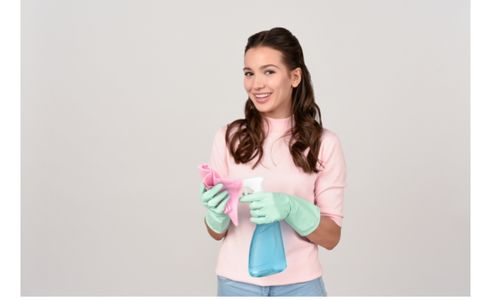
Cleaning glass is a dream! Because it is dishwasher safe, you don’t have to scrub it to remove tough stains.
Additionally, the glass’s structure is made to prevent it from sticking to anything, so you can be sure that there won’t be any leftover food in the nooks and crannies of your glassware.
Eco-friendly
Glass containers are a great choice as the globe moves toward a more sustainable lifestyle. Even damaged glass can be recycled and utilized to produce new glass products. As a result, if you consider yourself environmentally responsible, you might prefer to choose glass over plastic.
What Are the Drawbacks of Heating Food in Glass Containers
Before deciding to invest in glassware, let’s have a quick look at the disadvantages of glass.
Heavy Weight
Glassware is not the best option if you want to take it on the road. Due to their large size and weight, they are not portable.
Fragile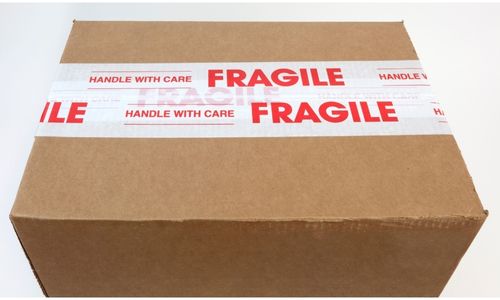
Even though you may have the most heat-resistant glass, glasswares are not immune to breakage. It can chip and crack if you accidentally bump into something.
Sometimes, the outer surface may become slippery after freezing or heating, creating a mess and breaking your glassware.
Hazardous
How often have you cleaned up and collected the little shards from shattered glass or plates? It is labor! Furthermore, those particles have the potential to inflict serious harm if left unattended.
What to Do If Glass Breaks In the Oven
Even after you take all the necessary precautions and the glassware still break, what next? Now you are left with a huge mess to clean and broken chunks of glass.
Turn Off Your Oven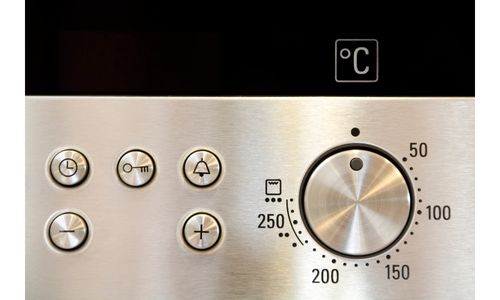
To protect your oven, it is best to switch off the power. Before attempting to begin cleaning the oven, let it cool. Do not allow the stains to set while you wait for the temperature to drop. You can start cleaning as soon as the temperature is bearable.
Protect Yourself
Your protection comes first! Hence, make sure you wear oven-safe gloves and ensure that you are safe from burns.
Pick Up the Pieces
Before attempting to clean the spilled food, pick up the glass pieces. This step requires precision, so take your time and grab even the tiniest piece while cleaning it. Dispose of the glass pieces by wrapping them in paper to avoid injuries.
Don’t Salvage Your Food
That meal is done! Please don’t make an effort to save it. Despite your best efforts, it’s still possible that a tiny fragment of glass missed your eyes. Consuming such food can be extremely dangerous for your health.
Removing Stains from Your Oven
When you are certain that you have gathered all the shattered glass, you can now attempt to clean the oven to remove stains and leftover food. Clean it thoroughly using a paper towel to remove all the solid particles.
Then, apply baking soda and water paste to the stained spots and let them sit for 15 minutes. The paste will help to remove the discoloration and make cleaning it easier. Furthermore, baking also helps to eradicate pungent odors.
After cleaning, if you still notice a slight stench, you can spray vinegar and leave it overnight before attempting to reheat anything.
FAQ
In this section, I have answered some commonly asked questions.
FAQ 1: Can you put a cold glass of Pyrex in the oven?
Answer: Pyrex glassware is famous for its ability to withstand temperature fluctuations. Hence, you can put a cold Pyrex in an oven. But, a better practice would be to let it thaw to a moderate room temperature before introducing it into the oven.
FAQ 2: Can I bake in a glass bowl?
Answer: Glass bowls can be used for baking if they are oven safe. Check the glassware for the oven-safe sign to ensure it can withstand high baking temperatures. If you cannot spot a sign, you can refer to the manual or the box it came with to be certain about the same.
FAQ 3: Can you put a cold metal pan in the oven
Answer: Metals expand on heating. Hence, if you put a cold metal tray in the oven, it will likely bend and make crackling noises due to the expansion. However, this may change the shape of your cookie or cake. The good news is that the metal will revert to its original size and shape after it has cooled.
Takeaway
It is safe to heat glass containers in the oven as long as you ensure that the glassware is safe to use in ovens. To prevent accidents, give the glassware some time to thaw at room temperature to avoid extreme temperature shocks.
If the glassware breaks down, clean it carefully and discard the remaining food.
I hope you found this article helpful. Let me know in the comments below if you have any further queries.



